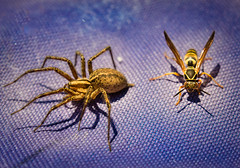Spring
Crane Down
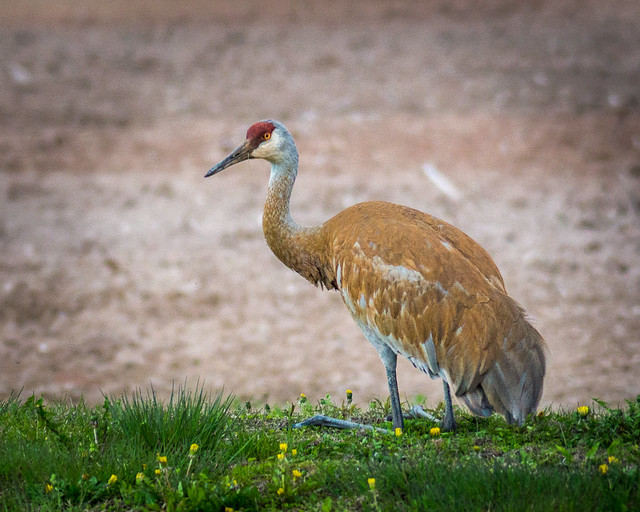
A sandhill crane seems to have found a green spot to rest. It was struggling to walk, due to some injury to its right leg and dropped to this stance for a short while.
Though sandhill cranes are plentiful in our area, I’ve had a difficult time getting a good photo of any. They are particularly shy and head for the hills whenever I attempt to get close enough for a decent photo. I spotted this one out my back window one morning as I was preparing to go to work. I could only see its head and upper body because it was behind the mound of grass it eventually rested on, as seen here.
When I first saw it, it was bobbing its head and hopping around with a flutter of its wings. It’s early spring so I thought it was some kind of mating dance going on. Of course, I ran for my camera. When I returned, it had made its way up the mound and I could see that its bob, hop and flutter was the result of some kind of painful leg injury. It was limping on it’s right leg and the herky-jerky motions, as it hobbled, to take some of the weight of its leg. After limping to this spot, at the top of the mound, its long legs buckled and it plopped into this position where it remained for several minutes. I closely looked at some of the other photos I took, while it was standing, and I didn’t notice any malady with the right leg other than the joint seemed to be larger.
When it eventually got back on its feet, it limped around a little until it reached down and ate a huge night crawler it found in the grass. A few moments later, another sandhill crane flew in and landed nearby and this one took to the air, flying off across the farm field and beyond the woods.
As I mentioned, these birds are shy – at least all the ones I’ve encountered. I was only able to get this image by shooting out the not-so-clean window of my garage. Even then, I was keeping myself hidden as much as I could; shooting at the edge of the window frame. I’m sure, if I would have attempted to get outside for a better vantage point, the bird would have been off at the slightest sound of the door opening.
I also got a few photos of the second sandhill crane that came just before this one flew away. I’ll post it sometime in the near future.
You can view a larger, more detailed version of this image by clicking on the photo.
All of the photos I post are available for purchase. If you’d like to buy one, click on the blue “Buy this Online” bar below for a variety of print and frame options or contact me for digital purchase and licensing options.
Brazenly Delicate
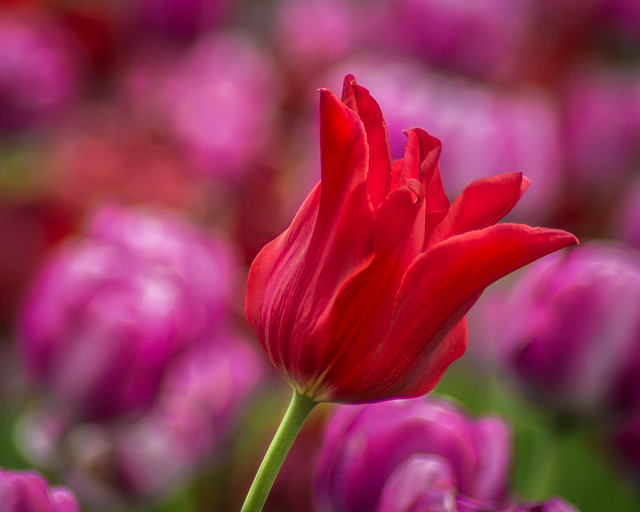
This red tulip seemed to be taking a bold stand among another group of purple and white tulips. This is another flower I captured a couple of years ago at the annual Tulip Festival held in Pella, Iowa.
Deep red colors, like this tulip, can be a challenge for photographers because most cameras have a tendency to over-saturate the red and the image will loose all it’s detail; it can turn out looking like one big blob of red, with no texture or definition. Most of my post processing on this image was working to control the red.
You can easily view a larger, more detailed version of this image by clicking on the photo.
All of the photos I post are available for purchase. If you’d like to buy one, click on the blue “Buy this Online” bar below for a variety of print and frame options or contact me for digital purchase and licensing options.
Splash of April Color
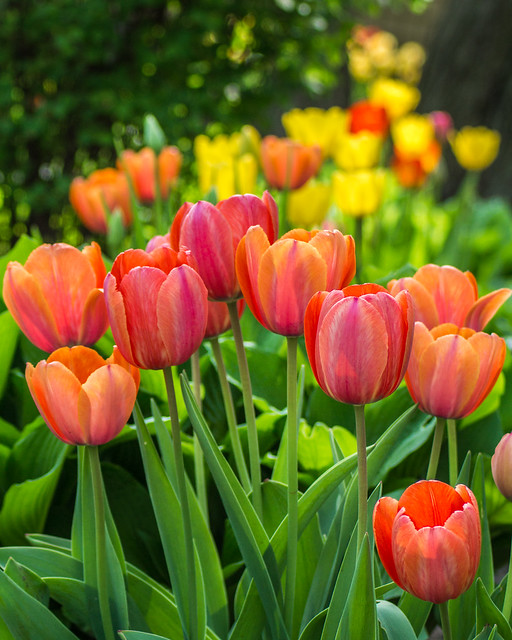
The tulip’s vivid colors and endless varieties are a most welcome sight of springtime in these parts. This cluster of beauty was photographed a couple of years ago during the Tulip Festival in Pella, IA.
I’ve had a bunch of tulips from the festival on my computer patiently waiting to be processed. With a bit of warmer weather and the prospect of blooming flowers on the horizon, I was reminded of the photo treasures I had yet to process and post. I’ll have to get to more of them in the future.
You can view a full-screen version of this image by clicking on the photo.
All of the photos I post are available for purchase. If you’d like to buy one, click on the blue “Buy this Online” bar below for a variety of print and frame options or contact me for digital purchase and licensing options.
Interloper
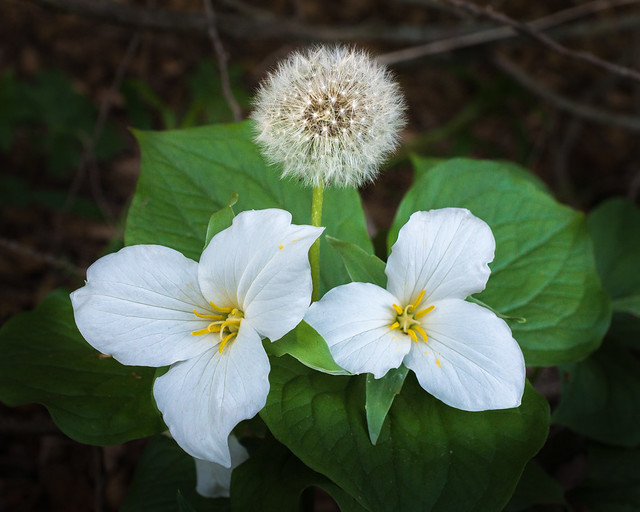
in·ter·lop·er
The dandelion is clearly the interloper here, inserting itself among the trilliums. These wildflowers were photographed on a recent hike in the woodlands of northeast Wisconsin.
I tried to capture the purity and details in the petals of the trillium blooms. The dandelion seemed to be photobombing. If you look closely, I think you can see a sly smirk on the dandelion’s face.
In any case, you can see all of the detail better by viewing the larger version. To do that, simply click on the photo.
All of the photos I post are available for purchase. If you’d like to buy one, click on the blue “Buy this Online” bar below for a variety of print and frame options or contact me for digital purchase and licensing options.
The Daffodil Patch
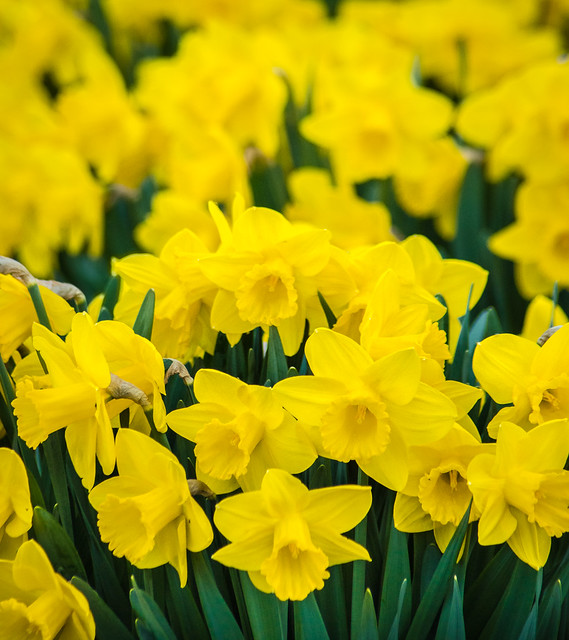 Daffodils are always a cheerful delight. Though short-lived, they are bright and vigorous springtime bloomers.
Daffodils are always a cheerful delight. Though short-lived, they are bright and vigorous springtime bloomers.
This particular patch is one of my favorite. Each spring, those driving north through Algoma,WI on highway 42 will find this plentiful display of yellow daffodils on the right side of the road, just before you descend the hill on the south side of town. My thanks and compliments to the homeowner who provide these well-cared-for beauties.
The daffodil is of the Narcissus genus – predominantly spring perennial plants in the Amaryllidaceae (amaryllis) family. Those in the Narcissus classification are easy to identify by their flowers with six petal-like tepals surmounted by a cup- or trumpet-shaped corona. According to Wikipedia, historical accounts suggest narcissi have been cultivated from the earliest times, but became increasingly popular in Europe after the 16th century and by the late 19th century were an important commercial crop centered primarily on the Netherlands. Today narcissi are popular as cut flowers and as ornamental plants in private and public gardens.
Like other members of their family, narcissi produce a number of different alkaloids, which provide some protection for the plant, but may be poisonous if accidentally ingested. This property has been exploited for medicinal use in traditional healing and has resulted in the production of galantamine for the treatment of Alzheimer’s dementia. Long celebrated in art and literature, narcissi are associated with a number of themes in different cultures, ranging from death to good fortune, and as symbols of spring. The daffodil is the national flower of Wales and the symbol of cancer charities in many countries.
You can view a larger version of this image by simply clicking on the photo.
All of the photos I post are available for purchase. If you’d like to buy one, click on the blue “Buy this Online” bar below for a variety of print and frame options or contact me for digital purchase and licensing options.
Heart On A String
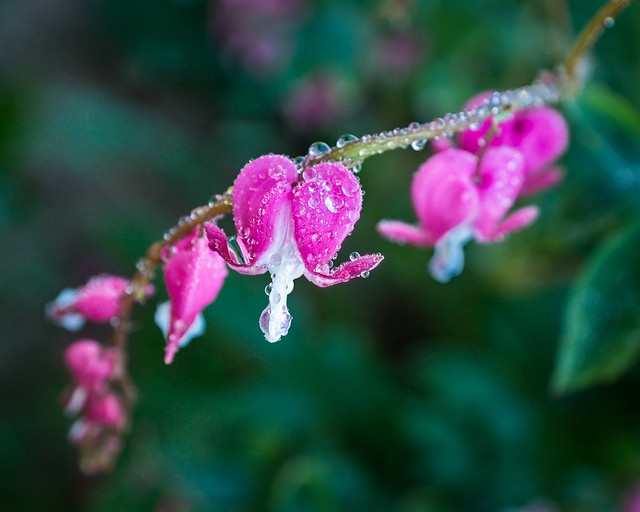
One of the most unique of flowers, this is the bleeding heart. It’s sparkling with moisture from a springtime rain.
The bleeding heart plant (lamprocapnos spectabilis) is native to China, Korea, Japan and Siberia. I was surprised to find out it is in the poppy family. It was brought to the west in the 1840s by the famed Scottish plant hunter, botanist Robert Fortune. It is prized by gardeners for its heart-shaped pink and white flowers that bloom in spring and early summer.
You can view a larger, more detailed version of this image by clicking on the photo.
All of the photos I post are available for purchase. If you’d like to buy one, click on the blue “Buy this Online” bar below for a variety of print and frame options or contact me for digital purchase and licensing options.
A Wet Spring
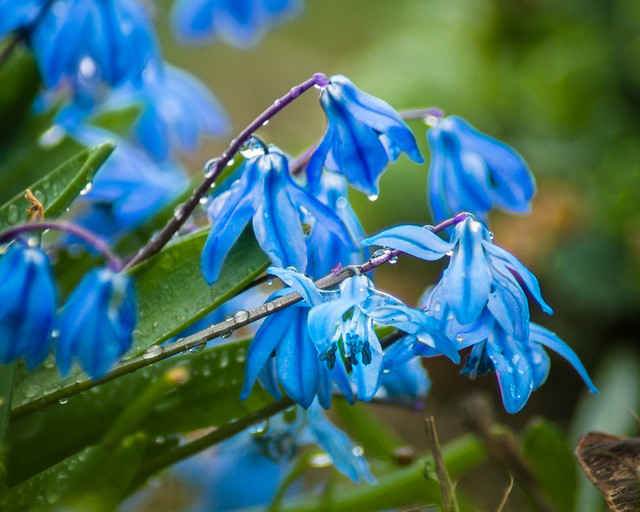
These little beauties seem drunk on spring; a bit disheveled as they lounge, casually soaking up the moisture of an early morning rain.
These very tiny, delicate flowers are known as “Spring Beauty” and “Siberian Squill.” Their formal name is Scilla Siberic. They are the very first of the flowers in our yard to appear in the spring.
Scilla Siberic is native to southwestern Russia, the Caucasus, and Turkey. Despite its name, it is not native to Siberia.
You can view a larger image of these tiny flowers by clicking on the photo.
Branching Out
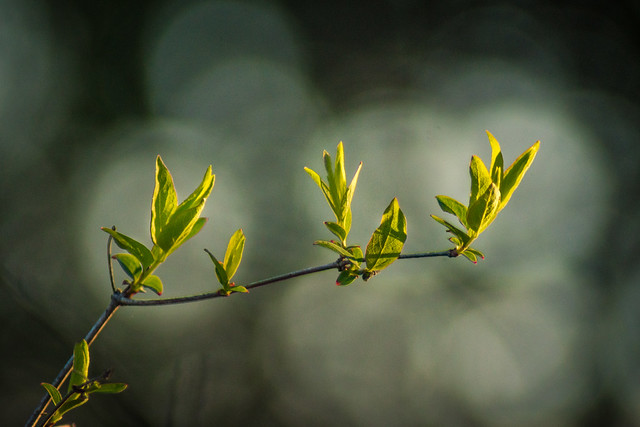
One of my favorite spring images are the new, delicate leaves that sprout from trees emerging from their winter dormancy.
As I walk through the woods I’m always scanning my surroundings for something that catches my eye. This sprig was captured by the late afternoon sunlight and highlighted by a back-light of filtering through the trees, making the very common uncommonly interesting. (At least to me.) It was just another twig among millions that caught my eye.
You can view more of the detail in this image by clicking on the photo.
All of the photos I post are available for purchase. If you’d like to buy one, click on the blue “Buy this Online” bar below for a variety of print and frame options or contact me for digital purchase and licensing options.
Woodland Whites
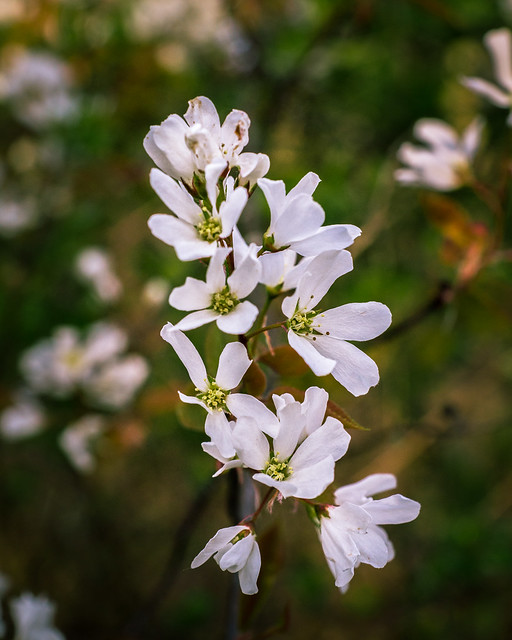 The trees are coming to life after a long winter’s nap. They seem to do so with great deal of grace and exuberance!
The trees are coming to life after a long winter’s nap. They seem to do so with great deal of grace and exuberance!
These are the blooms from a flowering tree we spotted on a springtime walk through the woods. The delicate flowers were fresh and plentiful but, I’m sure, will be short lived.
You can get a better look at these blooms by viewing the larger version. Just click on the photo.
All of the photos I post are available for purchase. If you’d like to buy one, click on the blue “Buy this Online” bar below for a variety of print and frame options or contact me for digital purchase and licensing options.
Spring Bloomers
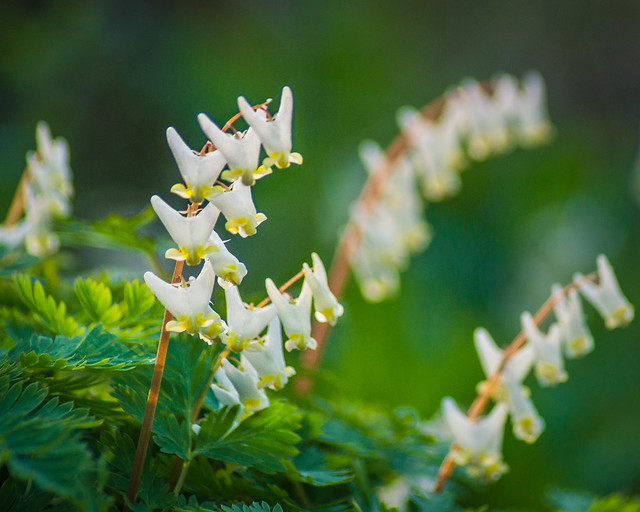
These are one of my wife’s favorite wildflowers. She can’t help but comment on how adorable they are. They are Dutchman’s Breeches. (Dicentra Cucullaria)
These unique wildflowers get their name from the shape of the flowers. They resemble pantaloons hanging upside down and slightly inflated. The yellow adornment at the bottom of the flower resembles a belt on the pantaloons. (I think they look more like old-fashioned bloomers. That’s why I titled this image, Spring Bloomers. That, and because they bloom very early in the spring.)
In our area they begin to show up in early May. The flowers are approximately 3/4 inch in length and white to pinkish in color. The blooms dangle down from thin stalks rising from the lush green plant. According to Wikipedia, Native Americans and early white practitioners considered this plant useful for syphilis, skin conditions and as a blood purifier.
You can view a larger version of this image simply by clicking on the photo.











